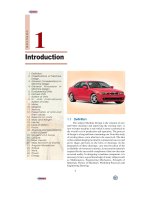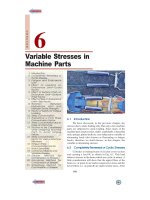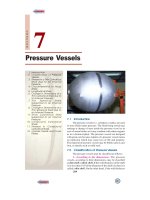Text book italian Demystified
Bạn đang xem bản rút gọn của tài liệu. Xem và tải ngay bản đầy đủ của tài liệu tại đây (2.59 MB, 481 trang )
italian
DeMYSTiFieD
Demystified Series
Accounting Demystified
Advanced Calculus Demystified
Advanced Physics Demystified
Advanced Statistics Demystified
Algebra Demystified
Alternative Energy Demystified
Anatomy Demystified
asp.net 2.0 Demystified
Astronomy Demystified
Audio Demystified
Biology Demystified
Biotechnology Demystified
Business Calculus Demystified
Business Math Demystified
Business Statistics Demystified
C++ Demystified
Calculus Demystified
Chemistry Demystified
Circuit Analysis Demystified
College Algebra Demystified
Corporate Finance Demystified
Databases Demystified
Data Structures Demystified
Differential Equations Demystified
Digital Electronics Demystified
Earth Science Demystified
Electricity Demystified
Electronics Demystified
Engineering Statistics Demystified
Environmental Science Demystified
Everyday Math Demystified
Fertility Demystified
Financial Planning Demystified
Forensics Demystified
French Demystified
Genetics Demystified
Geometry Demystified
German Demystified
Home Networking Demystified
Investing Demystified
Java Demystified
JavaScript Demystified
Lean Six Sigma Demystified
Linear Algebra Demystified
Macroeconomics Demystified
Management Accounting Demystified
Math Proofs Demystified
Math Word Problems Demystified
MATLAB ® Demystified
Medical Billing and Coding Demystified
Medical Terminology Demystified
Meteorology Demystified
Microbiology Demystified
Microeconomics Demystified
Nanotechnology Demystified
Nurse Management Demystified
OOP Demystified
Options Demystified
Organic Chemistry Demystified
Personal Computing Demystified
Pharmacology Demystified
Physics Demystified
Physiology Demystified
Pre-Algebra Demystified
Precalculus Demystified
Probability Demystified
Project Management Demystified
Psychology Demystified
Quality Management Demystified
Quantum Mechanics Demystified
Real Estate Math Demystified
Relativity Demystified
Robotics Demystified
Sales Management Demystified
Signals and Systems Demystified
Six Sigma Demystified
Spanish Demystified
sql Demystified
Statics and Dynamics Demystified
Statistics Demystified
Technical Analysis Demystified
Technical Math Demystified
Trigonometry Demystified
uml Demystified
Visual Basic 2005 Demystified
Visual C# 2005 Demystified
xml Demystified
italian
DeMYSTiFieD
Marcel Danesi
New York Chicago San Francisco Lisbon London Madrid Mexico City
Milan New Delhi San Juan Seoul Singapore Sydney Toronto
Copyright © 2007 by The McGraw-Hill Companies, Inc. All rights reserved. Manufactured in the United States of America. Except
as permitted under the United States Copyright Act of 1976, no part of this publication may be reproduced or distributed in any
form or by any means, or stored in a database or retrieval system, without the prior written permission of the publisher.
0-07-159373-X
The material in this eBook also appears in the print version of this title: 0-07-147659-8.
All trademarks are trademarks of their respective owners. Rather than put a trademark symbol after every occurrence of a
trademarked name, we use names in an editorial fashion only, and to the benefit of the trademark owner, with no intention of
infringement of the trademark. Where such designations appear in this book, they have been printed with initial caps.
McGraw-Hill eBooks are available at special quantity discounts to use as premiums and sales promotions, or for use in corporate
training programs. For more information, please contact George Hoare, Special Sales, at or (212)
904-4069.
TERMS OF USE
This is a copyrighted work and The McGraw-Hill Companies, Inc. (“McGraw-Hill”) and its licensors reserve all rights in and to
the work. Use of this work is subject to these terms. Except as permitted under the Copyright Act of 1976 and the right to store and
retrieve one copy of the work, you may not decompile, disassemble, reverse engineer, reproduce, modify, create derivative works
based upon, transmit, distribute, disseminate, sell, publish or sublicense the work or any part of it without McGraw-Hill’s prior
consent. You may use the work for your own noncommercial and personal use; any other use of the work is strictly prohibited. Your
right to use the work may be terminated if you fail to comply with these terms.
THE WORK IS PROVIDED “AS IS.” McGRAW-HILL AND ITS LICENSORS MAKE NO GUARANTEES OR WARRANTIES
AS TO THE ACCURACY, ADEQUACY OR COMPLETENESS OF OR RESULTS TO BE OBTAINED FROM USING THE
WORK, INCLUDING ANY INFORMATION THAT CAN BE ACCESSED THROUGH THE WORK VIA HYPERLINK OR
OTHERWISE, AND EXPRESSLY DISCLAIM ANY WARRANTY, EXPRESS OR IMPLIED, INCLUDING BUT NOT
LIMITED TO IMPLIED WARRANTIES OF MERCHANTABILITY OR FITNESS FOR A PARTICULAR PURPOSE.
McGraw-Hill and its licensors do not warrant or guarantee that the functions contained in the work will meet your requirements or
that its operation will be uninterrupted or error free. Neither McGraw-Hill nor its licensors shall be liable to you or anyone else for
any inaccuracy, error or omission, regardless of cause, in the work or for any damages resulting therefrom. McGraw-Hill has no
responsibility for the content of any information accessed through the work. Under no circumstances shall McGraw-Hill and/or its
licensors be liable for any indirect, incidental, special, punitive, consequential or similar damages that result from the use of or
inability to use the work, even if any of them has been advised of the possibility of such damages. This limitation of liability shall
apply to any claim or cause whatsoever whether such claim or cause arises in contract, tort or otherwise.
DOI: 10.1036/0071476598
Professional
Want to learn more?
We hope you enjoy this
McGraw-Hill eBook! If
you’d like more information about this book,
its author, or related books and websites,
please click here.
For more information about this title, click here
CONTENTS
Introduction
xi
PART ONE
BASIC SKILLS
CHAPTER 1
Italian Pronunciation and Spelling
Pronunciation of Italian Vowels
Introducing Yourself
Pronunciation of Italian Consonants
Introducing People
Italian Spelling and Capitalization
Using the Verb Piacere
Asking People How They Are
Names and Surnames
QUIZ
3
4
7
8
12
13
15
15
16
17
CHAPTER 2
Meeting and Greeting People
Italian Nouns
Asking Chi è?
Asking Che cosa è?
Plural Nouns
Asking Chi sono? and Che cosa sono?
Italian Titles
Meeting and Greeting Expressions
QUIZ
21
22
24
25
27
28
30
31
33
v
vi
Contents
CHAPTER 3
Asking Questions
More Plural Nouns
Days of the Week and Months of the Year
Languages and Nationalities
Question Words
Italian-Speaking World
Other Countries Around the World
QUIZ
37
37
40
43
44
49
49
52
CHAPTER 4
Describing People and Things
Personal Pronouns
Using the Verb Essere
Adjectives
Numbers from 0 to 20
Italian Currency
Numbers from 21 to 100
Asking Questions with Prepositions
Using Quanto and Quale
QUIZ
55
56
57
59
65
65
66
68
69
70
CHAPTER 5
Expressing Likes and Dislikes
Forms of the Indefinite Article
Forms of the Definite Article
Expressing Here and There with Essere
Using the Verb Avere
Using the Verb Stare
More About Using the Verb Piacere
QUIZ
PART ONE TEST
73
74
77
82
85
87
89
91
95
PART TWO
EXPANDING ON THE BASICS
CHAPTER 6
Learning the Present Indicative with -are Verbs
Present Indicative of -are Verbs
Expressions of Time
Verbs Ending in -care, -gare, -ciare, and -giare
103
104
106
108
vii
Contents
CHAPTER 7
CHAPTER 8
CHAPTER 9
Italian Food and Drink
Using the Verbs Bere and Dare
More About Nouns and Gender
Numbers from 101 to 1000
QUIZ
109
111
115
117
120
Prepositions and the Present Indicative of
-ere Verbs
Present Indicative of -ere Verbs
Using the Verbs Fare and Dire
Prepositional Contractions
Numbers Over 1000
Telling Time
QUIZ
123
124
126
128
133
136
140
Demonstratives and the Present Indicative of
-ire Verbs
Present Indicative of -ire Verbs
Using the Verb Capire
Using the Verbs Andare, Uscire, and Venire
Ordinal Numbers
Demonstratives
Expressing Dates
Italian Holidays
QUIZ
143
144
145
148
151
153
158
159
160
Present Progressives and Possessives
Present Progressive Tense
Using the Verbs Potere, Volere, and Dovere
Possessives
Talking About the Weather
Italian Cities
QUIZ
163
164
166
169
177
179
180
viii
Contents
CHAPTER 10
Giving Commands
Imperative Tense
Negative Imperative
Using the Verbs Sapere and Conoscere
Partitives
Talking About Addresses
QUIZ
PART TWO TEST
183
183
191
192
195
200
201
205
PART THREE
BUILDING COMPETENCE
CHAPTER 11
Using Reflexive Verbs
Reflexive Verbs
Imperative Forms of Reflexive Verbs
Reciprocal Forms of Verbs
Fractions and Other Numerical Expressions
Clothing
QUIZ
213
213
217
219
221
224
226
CHAPTER 12
Using the Present Perfect Tense
Present Perfect Tense with Avere
Present Perfect Tense with Essere
Irregular Past Participles
More About the Definite Article
QUIZ
229
229
234
238
241
245
CHAPTER 13
Using the Imperfect Tense
Imperfect Tense
Irregular Verbs in the Imperfect Tense
Progressive Form of the Imperfect Tense
More About Demonstratives and Possessives
QUIZ
247
247
253
255
258
261
CHAPTER 14
Using the Pluperfect and Past Absolute Tenses
Pluperfect Tense
Past Absolute Tense
Irregular Verbs in the Past Absolute Tense
263
264
267
271
ix
Contents
Transportation
QUIZ
276
276
CHAPTER 15
More About Nouns and Adjectives
More About Masculine and Feminine Nouns
Nouns of Greek Origin
Position of Adjectives
Form-Changing Adjectives
Human Body
QUIZ
PART THREE TEST
279
279
283
287
289
294
295
299
PART FOUR
EXTENDING COMPETENCE
CHAPTER 16
Talking About the Future
Using the Future Tense
Irregular Forms in the Future Tense
Future Perfect Tense
Talking About Sports
QUIZ
307
307
314
318
321
323
CHAPTER 17
Using the Conditional Tense
Conditional Tense
Irregular Forms in the Conditional Tense
Past Conditional Tense
Using Negatives
Italian People
QUIZ
325
325
331
336
338
341
341
CHAPTER 18
Using Object Pronouns
Object Pronouns
Object Pronouns with Past Participles
A Bit More About Adjectives
Adverbs
Computers and the Internet
QUIZ
345
345
351
354
356
361
361
x
Contents
CHAPTER 19
Using Double and Attached Object Pronouns
Double Object Pronouns
Attached Object Pronouns
Stressed Pronouns
Still More About the Verb Piacere
QUIZ
365
366
369
373
375
378
CHAPTER 20
Making Comparisons
More About Pronouns
Adjectives of Comparison
Adverbs of Comparison
Relative Pronouns
Italian Coffee
QUIZ
PART FOUR TEST
381
382
386
392
393
396
396
399
FINAL EXAM
Italian-English Glossary
English-Italian Glossary
Answer Key
Index
405
417
427
437
455
INTRODUCTION
This book is for those who want to learn the basics of the Italian language without
taking a formal course. It can also serve as a supplementary, complementary, or
even primary text in a classroom, tutored, or homeschooled environment, given its
comprehensiveness in covering the main points of Italian grammar, vocabulary,
and communication. You’ll find a straightforward explanation of key Italian grammar points including all of the major verb tenses. In addition to grammar points,
you will learn key vocabulary through vocabulary lists and example sentences. The
most common words will also appear in the glossaries in the back of this book.
There are two ways you can use this book. You can start at the beginning and go
straight through, without skipping any part or omitting any exercise. Or, you can
jump around, using the Table of Contents to pick and choose the grammar points
you most need demystified for you.
This book contains an abundance of practice material. After a topic is introduced
in each chapter, you will come across an Oral Practice section, which will allow you
to become familiar with the topic by simple imitation and reading practice. This is
usually followed by a Written Practice section, which will give you the opportunity
to practice what you’ve learned by supplying the answers on your own. In the latter
case, you can check your answers for correctness in the Answer Key at the back of
the book and then move on with confidence. There is a quiz at the end of every
chapter. The quizzes will help you to review the contents of each chapter and will
reinforce your knowledge of the grammar points discussed. These are open-book
quizzes. This means that you may, and should, refer to the relevant sections in that
chapter as you work through a particular question. Write down your answers, and
then check them in the Answer Key. Try to achieve a score of 80 percent on the quiz
before moving on to the next chapter.
There are four major parts within this book, each organized in order of increasing complexity and focused on what you will need to know in order to use the Italian language in common situations. Grammatical accuracy and knowledge are
emphasized in each chapter, and information on communication skills and Italian
xi
Copyright © 2007 by The McGraw-Hill Companies, Inc. Click here for terms of use.
xii
Introduction
culture is interspersed throughout, forming the backbone of what you will be learning to do with the Italian vocabulary and grammar.
Each part contains five chapters, and each chapter contains from four to eight
topics, making the overall learning easy to digest in small capsules. However, as
you progress, you will have to recall what you have learned in previous chapters and
use it along with the new material. The best way to do this is to review the chapter
quizzes, which are designed to test you on the contents of each chapter. You may
find that you need to review just a section in a chapter, or you may have to review
the entire chapter.
At the end of each of the four major parts in this book, you will find a fifty-question multiple-choice test. Take the test only when you’ve completed the previous
five chapters in that part. Each test is a closed-book test, which means that you
should not look back through the text for the correct answers. The questions are not
as specific in the tests as in the quizzes, but will help you gauge your knowledge to
that point. A satisfactory score on each of these tests is 75 percent of the answers
correct. You can check your answers in the Answer Key at the back of this book.
There is a 100-question Final Exam at the end of the book. The questions in this
exam cover the main aspects of the Italian language and culture and are drawn from
all four parts. Take the Final Exam only after completing all twenty chapters. A
satisfactory score on the exam is at least 75 percent of the answers correct.
It is recommended that you complete one chapter per week, studying it for about
one to two hours each day. Don’t rush through a chapter. Give your mind time to
absorb the material in it. But do not go too slowly either. Take it at a steady pace and
keep it up throughout the course. Languages are not easy to learn. They require
time and effort. But the way in which this book is organized allows you to absorb
each concept of the Italian language in small pieces, and doing so enables you to
come out of the course with a firm knowledge of basic Italian.
When you’ve completed this course, you can use this book as a permanent reference manual to review Italian concepts whenever you need to. There is an Index at
the back to help you find the topics covered.
Learning a foreign language is exciting and fun, so above all else, enjoy
yourself!
PART ONE
BASIC SKILLS
1
Copyright © 2007 by The McGraw-Hill Companies, Inc. Click here for terms of use.
This page intentionally left blank
CHAPTER 1
Italian
Pronunciation
and Spelling
Here’s what you will learn in this chapter:
Pronunciation of Italian Vowels
Introducing Yourself
Pronunciation of Italian Consonants
Introducing People
Italian Spelling and Capitalization
Using the Verb Piacere
Asking People How They Are
Names and Surnames
3
Copyright © 2007 by The McGraw-Hill Companies, Inc. Click here for terms of use.
4
Italian Demystified
Pronunciation of Italian Vowels
Come si pronuncia? How does one pronounce it? This chapter will address the
important aspects of Italian pronunciation. There are two kinds of sounds in any
language: vowels and consonants. Vowels are produced by expelling air through the
mouth without blockage. The letters that represent these sounds in Italian are the
same as those used in English: a, e, i, o, u.
Because Italian and English use many of the same alphabet characters, be careful! Some sounds represented by certain letters in Italian are different from the
sounds those letters represent in English. Also, stressed vowels (vowels bearing the
main accent) in Italian are not pronounced with a “glide” as in English (such as the
added w sound in the middle of the word going).
Throughout this chapter there are pronunciation guides. These will help you
become familiar with Italian sounds. Follow them carefully.
A
A is pronounced like the English a in father, or as in the exclamation ah!: Anna
(Ahn-nah) Anne and Anna. Here are a few more Italian names that start with this
vowel.
Arturo
Arnaldo
Andrea
Amelia
(ahr-tOOh-roh)
(ahr-nAhl-doh)
(ahn-drEh-ah)
(ah-mEh-leeh-ah)
Arthur
Arnold
Andrew
Amelia
E
E is pronounced like the e in bet, or as in the exclamation eh!: Emma (Ehm-mah)
Emma. Here are a few more Italian names that start with this vowel.
Erminia
Edoardo
Eleonora
Elena
(ehr-mEEh-neeh-ah)
(eh-doh-Ahr-doh)
(eh-leh-oh-nOh-rah)
(Eh-leh-nah)
Hermione
Edward
Eleanor
Helen
I
I is pronounced like the i sound in machine, or as in the exclamation eeh!: Ida
(EEh-dah) Ida. Here are a few more Italian names that start with this vowel.
CHAPTER 1
Irma
Ignazio
Ilaria
Isabella
Italian Pronunciation and Spelling
(EEhr-mah)
(eeh-nyAh-tseeh-oh)
(eeh-lAh-reeh-ah)
(eeh-zah-bEhl-lah)
5
Irma
Ignatius
Hilary
Isabel
O
O is pronounced like the o sound in sorry, or as in the exclamation oh! as in Otto
(Oht-toh), Otto. Here are a few more Italian names that start with this vowel.
Orlando
Olivia
Omero
Orfeo
(ohr-lAhn-doh)
(oh-lEEh-vyah)
(oh-mEh-roh)
(ohr-fEh-oh)
Roland
Olivia
Homer
Orpheus
U
U is pronounced like the oo sound in boot, or as in the exclamation ooh!: Ugo
(OOh-goh), Hugh and Hugo. Here are a few more Italian names that start with this
vowel.
Uberto
Umberto
Ulisse
(ooh-bEhr-toh)
(oohm-bEhr-toh)
(ooh-lEEh-seh)
Hubert
Humbert
Ulysses
DIFFERENCES IN PRONUNCIATION
The vowels e and o are pronounced differently in various parts of Italy. In some
regions they are spoken with the mouth more open; in others, more closed. In many
areas, however, both pronunciations are used. This is analogous to how the English
a in tomato is pronounced in North America. In some areas it is pronounced like
the a in father; in others it is pronounced like the a in pay. However, whether it is
pronounced one way or the other, no one will have much difficulty understanding
that the word is still tomato. Similarly, whether Elena is pronounced with the first
e open, similar to the English word led, or closed, similar to the English word bet,
Italians will still know it is the same word.
6
Italian Demystified
DIPHTHONGS
The Italian letter i stands for a sound similar to the English y in yes if it comes
before a stressed vowel. Similarly, the letter u stands for a sound similar to the English w in way if it comes before a stressed vowel. This type of syllable is called a
diphthong.
Biagio
Bianca
Pietro
Guido
Pasquale
(byAh-joh)
(byAhn-kah)
(pyEh-troh)
(gwEEh-doh)
(pahs-kwAh-leh)
Blaise
Blanche, Bianca
Peter
Guy
Pascal
Be careful! In some words i and u are pronounced as belonging to a separate syllable, even if followed by another vowel. In Italian there is no accent mark to show
this feature.
Maria
Vittorio
Luigi
(mah-rEEh-ah)
(veeht-tOh-reeh-oh)
(looh-EEh-jeeh)
Mary
Victor
Louis
In most words, the stress (main accent) falls on the next-to-last syllable.
Ornella
Arturo
(ohr-nEhl-lah)
(ahr-tOOh-roh)
Ornella
Arthur
But, again, be careful! This is not always the case.
Elena
Agata
Cesare
(Eh-leh-nah)
(Ah-gah-tah)
(chEh-zah-reh)
Helen
Agatha
Caesar
Some words are written with an accent mark on the final vowel. This means, of
course, that you must put the main stress on that vowel.
Niccolò
(neehk-koh-lOh)
Nicholas
CHAPTER 1
Italian Pronunciation and Spelling
7
Introducing Yourself
To ask someone’s name directly in Italian you can say:
Come ti chiami?
What is your name?
You answer with:
Mi chiamo…
My name is . . .
If you’re speaking about a third party, you would say:
Lui come si chiama?
What is his name?
Lei come si chiama?
What is her name?
Or:
Come si chiama il tuo amico?
What is your (male) friend’s name?
Come si chiama la tua amica?
What is your (female) friend’s name?
Oral Practice
Practice saying the following sentences out loud. The focus here is on pronouncing
vowels as they occur in names.
Come ti chiami?
What is your name?
Mi chiamo Anna.
My name is Anna.
Come ti chiami?
What is your name?
Mi chiamo Ugo.
My name is Hugh.
Lui come si chiama?
What is his name?
Lui si chiama Cesare.
His name is Caesar.
Lei come si chiama?
What is her name?
Lei si chiama Elena.
Her name is Helen.
Come si chiama il tuo amico?
What is your (male) friend’s name?
8
Italian Demystified
Il mio amico si chiama Guglielmo.
My friend’s name is William.
Come si chiama la tua amica?
What is your (female) friend’s name?
La mia amica si chiama Pasqualina. My friend’s name is Pasqualina.
Pronunciation of Italian Consonants
E adesso come si pronuncia? And now, how does one pronounce it? Note two useful words within this question:
e
adesso
(ah-dEhs-soh)
and
now
Single consonant sounds are produced by a blockage (partial or complete) of the
air expelled through the mouth. Most Italian consonants are pronounced in the
same way they are pronounced in English.
Bruno
Franco
Mario
Nora
Vittoria
(brOOh-noh)
(frAhn-koh)
(mAh-reeh-oh)
(nOh-rah)
(veeht-tOh-ryah)
Bruno
Frank
Mario
Nora
Victoria
There are some differences, however. The consonant sound represented by the
letter p is not accompanied by a small puff of air, as it is at the beginning of some
English words.
Piero
Pina
(pyEh-roh)
(pEEh-nah)
Pierre
Pina
In addition, the sounds represented by the letters t and d in Italian do not correspond exactly to the English sounds represented by these letters. In Italian you must
place the tongue on the upper teeth, not just above them (as in English).
Tina
Tommaso
Dina
Daniele
(tEEh-nah)
(tohm-mAH-zoh)
(dEEh-nah)
(dah-nyEh-leh)
Tina
Thomas
Dina
Daniel
CHAPTER 1
Italian Pronunciation and Spelling
9
The sound represented by the letter l is identical to the English l sound in love.
However, in English, the back of the tongue is raised toward the back of the mouth
when l occurs at the end of a syllable or word, as in bill or filler. This feature, known
as the “dark l,” is not found in Italian pronunciation.
Aldo
Paolo
(Ahl-doh)
(pah-Oh-loh)
Aldo
Paul
The sound represented by gli is similar to the English lli in million, but much
more forceful. And the sound represented by gn is similar to the English ny in canyon, but, again, much more forceful.
Guglielmo
Benigna
Ignazio
(gooh-lyEhl-moh)
(beh-nEEh-nyah)
(eeh-nyAh-tsyoh)
William
Benigna (Benign)
Ignatius
The letter s can stand for both the s sound in the English word sip or the z sound
in zip. The Italian z sound is used before b, d, g, l, m, n, r, v, and between vowels;
otherwise, the s sound is used.
z sound
Cesare
Osvaldo
Giuseppe
(chEh-zah-reh)
(oh-zvAhl-doh)
(jooh-zEhp-peh)
Caesar
Oswald
Joseph
s sound
Cristofero
Pasqualina
Sara
Sandra
(kreeh-stOh-fehroh)
(pah-s-kwah-lEEh-nah)
(sAh-rah)
(sAhn-drah)
Christopher
Pasqualina
Sarah
Sandra
The letter z stands for the ts sound as in the English word cats or the ds sound as
in lads.
Vincenzo
Renzo
(veehn-chEhn-tsoh or veehn-chEhn-dsoh)
(rEhn-tsoh or rEhn-dsoh)
Vincent
Lawrence
The letter r stands for a sound that is different from the English r. To pronounce
the Italian sound, roll your tongue a few times on the ridge above your top front
teeth.
10
Rachele
Riccardo
Italian Demystified
(rah-kEh-leh)
(reehk-kAhr-doh)
Rachel
Richard
The hard k sound is spelled as c before consonants and the vowels a, o, u. It is
spelled as ch before the vowels e and i. The sound sequence kw is spelled (usually)
as qu.
Claudia
Carlo
Concetta
Marco
Chiara
Achille
Michele
Pasquale
(klAh-ooh-deeh-ah)
(kAhr-loh)
(kohn-chEht-tah)
(mAhr-koh)
(kyAh-rah)
(ah-kEEhl-leh)
(meeh-kEh-leh)
(pahs-kwAh-leh)
Claudia
Carlo, Charles
Concetta (Connie)
Mark
Claire
Achilles
Michael
Pascal
The soft ch sound (as in church) is spelled as c before the vowels e and i. It is
spelled as ci before the vowels a, o, u.
Cecilia
Ciro
Felicia
Lucio
(cheh-chEEh-leeh-ah)
(chEEh-roh)
(feh-lEEh-chah)
(lOOh-choh)
Cecile
Cyrus
Felicia
Lucius
The hard g sound is spelled as g before consonants and the vowels a, o, u. It is
spelled as gh before the vowels e and i. The sound sequence gw is spelled (usually)
as gu.
Gloria
(glOh-reeh-ah)
Gabriella
(gah-breeh-Ehl-lah)
Gustavo
(goohs-tAh-voh)
il signor Gherli (gEhr-leeh)
Gloria
Gabrielle
Gustav
Mr. Gherli
The soft j sound is spelled as g before the vowels e and i. It is spelled as gi before
the vowels a, o, and u.
Gerardo
Gino
Giacomo
Giovanni
Giulia
(jeh-rAhr-doh)
(jEEh-noh)
(jAh-koh-moh)
(joh-vAhn-neeh)
(jOOh-leeh-ah)
Gerard
Gino
Jack
John
Julia
CHAPTER 1
Italian Pronunciation and Spelling
11
The sound sequence sk is spelled as sc before consonants and the vowels a, o, u.
It is spelled as sch before the vowels e and i. The soft sh sound (as in shoe) is spelled
as sc before the vowels e and i.
Francesco
Francesca
(frahn-chEhs-koh)
(frahn-chEhs-kah)
Surnames
il signor Franceschi
la signora Boschi
il signor Cascina
la signora Guscini
Francis
Frances
(frahn-chEhs-keeh)
(bOhs-keeh)
(kah-shEEh-nah)
(gooh-shEEh-neeh)
Mr. Franceschi
Mrs. Boschi
Mr. Cascina
Mrs. Guscini
DOUBLE CONSONANTS
Each single consonant has a corresponding double pronunciation in Italian, which
lasts twice as long and is slightly more forceful. The double consonant is shown,
generally, with double letters.
Riccardo
Giovanni
Tommaso
Giuseppe
Annabella
Ferruccio
Santuzza
Vittoria
Alessandro
Raffaele
(reehk-kAhr-doh)
(joh-vAhn-neeh)
(tohm-mAh-zoh)
(jooh-zEhp-peh)
(ahn-nah-bEhl-lah)
(fehr-rOOh-choh)
(sahn-tOOh-tsah)
(veeht-tOh-reeh-ah)
(ah-lehs-sAhn-droh)
(rahf-fah-Eh-leh)
Richard
John
Thomas
Joseph
Annabelle
Ferruccio
Santuzza
Victoria
Alexander
Ralph
The letters gl and gn between vowels are pronounced more forcefully than their
English counterparts lly and ny.
Guglielmo
Ignazio
(gooh-lyEhl-moh)
(eeh-nyAh-tsyoh)
William
Ignatius
The double or lengthened version of ch, ci, gh, and gi is achieved by doubling the
first letter.









